Recent Articles
Popular Makes
Body Types
10 Large SUVs with the Best Crash Test Ratings

2016 Infiniti QX80 in motion ・ Photo by Infiniti
The biggest sport-utility vehicles today combine rugged body-on-frame construction along with an increasing number of driver-assistance technologies. That means they also combine true truck capability with an extra dose of driver confidence. And that’s particularly true for the large SUVs with the best crash test ratings, since those are backed up by strong results in the government’s “5 Star” crash-test program. On the other hand, no body-on-frame SUVs have yet earned a 2017 Top Safety Pick certification from the IIHS. Until automakers rectify that situation, here are 10 SUVs that, nonetheless, are some of the top choices in the segment for safety-minded customers. (Alternatively, quite a few crossovers, with less capability but a more car-like unibody construction, are Top Safety Picks.)
2017 Ford Expedition
The 2017 Ford Expedition stands out from other large suvs with the best crash test ratings, because it’s the only mainstream entry with a 5 Star Overall Safety Rating from NHTSA. Notably, that includes standard five-star ratings for both frontal- and side-crash tests, as well as a three-star grade for roof strength; four-wheel-drive Expeditions then received four stars in the roof test. The Expedition also checks in with one of NHTSA’s “Recommended Safety Technologies”—in the form of a standard rearview camera—and to be clear, the extended-length Expedition models have the same star ratings as their regular-wheelbase siblings. Also available for the Expedition: rain-sensing wipers, rear parking sensors, and Ford’s Blind Spot Information System with rear cross-traffic alert.
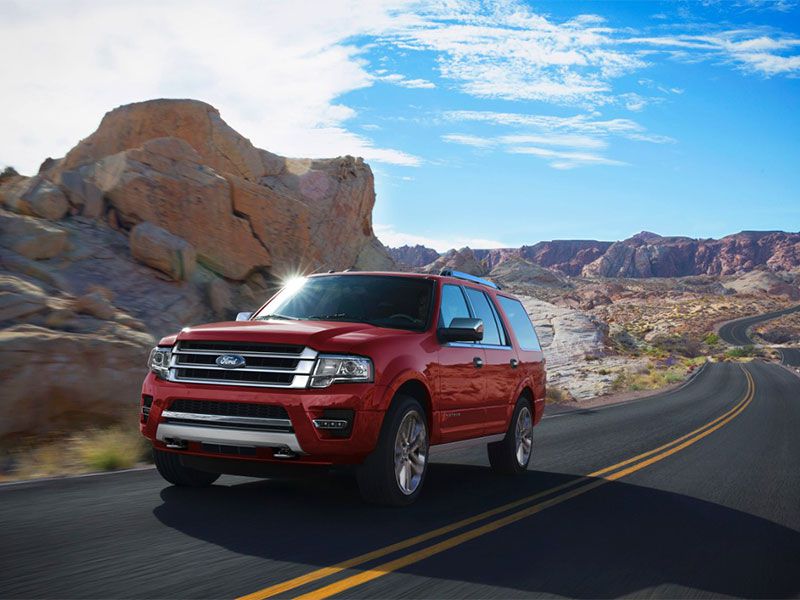
Photo by Ford
2017 Lincoln Navigator
The 2017 Lincoln Navigator shares its robust platform with the Ford Expedition, and as a result, it also shares the same 5-Star Overall Safety Score, complete with the same grades in the individual NHTSA tests. Of course, the Navigator also serves up its own share of safety technologies, with highlights such as a rearview camera, Blind Spot Information System, and front and rear parking sensors. The Navigator then brings a more premium ownership experience than its Blue Oval sibling. For example, unlike many of the large suvs with the best crash test ratings, the Lincoln comes standard with heated and ventilated front-row seating, heated second-row bucket seats, a leather- and wood-trimmed steering wheel, and a 14-speaker THX premium sound system.

Photo by Lincoln
2017 Chevrolet Tahoe and Suburban
With only a few brands still selling body-on-frame sport-utilities, the large suvs with the best crash test ratings are concentrated among a likewise small group of automakers. From General Motors, they include the 2017 Chevrolet Tahoe and its extended-wheelbase version, the 2017 Chevrolet Suburban. Both took home 4 Star Overall Safety Scores from NHTSA, although with slightly different results in the individual tests: The Tahoe had 5 Stars for frontal-crash protection, 5 Stars for side-crash protection, and 3 Stars for rollover roof strength, and the Tahoe checked in with 4 Stars for front-crash protection and the same scores in the other tests. Chevy’s SUVs also offers unexpected safety technologies such as a rear-seat reminder and a new-for-2017 low-speed forward automatic braking.

Photo by Chevrolet
2017 GMC Yukon and Yukon XL
GMC also has a pair of SUVs with good crash test ratings. The full-size 2017 GMC Yukon and extended-wheelbase 2017 GMC Yukon XL are the Professional Grade counterparts to the Chevy Yukon and Suburban, bringing a more uplevel ownership experience and similar NHTSA ratings. To be exact, the Yukon and Yukon XL—Denali trims included—are both certified with 4 Star Overall Safety Scores, 5 Star ratings for frontal and side-crash tests, and a 3 Star grade for rollover roof strength. Further, as is the case with the Bowtie brand products, the GMC SUVs can supply low-speed forward automatic braking, forward collision warning, and lane-departure warning; the latter three are Recommended Safety Technologies according to NHTSA.
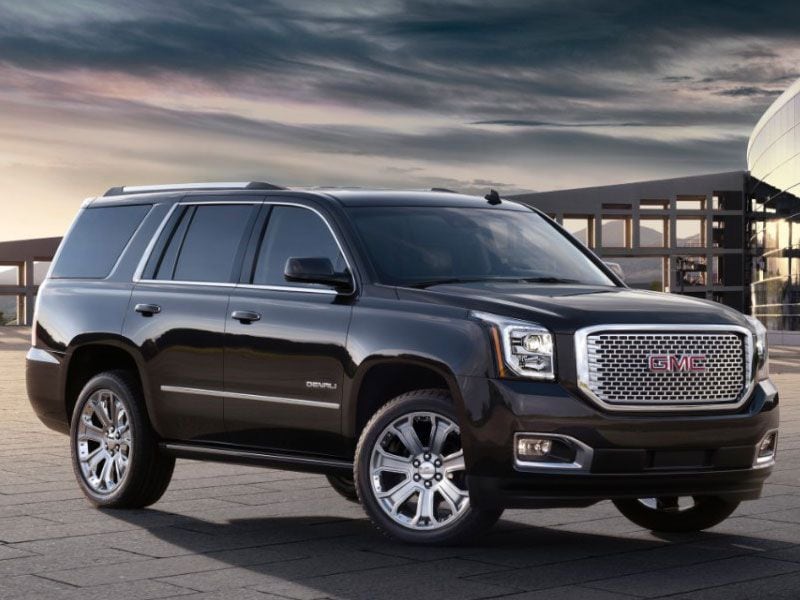
Photo by GMC
2017 Cadillac Escalade and Escalade ESV
The 2017 Cadillac Escalade and Escalade ESV cap off GM’s large suvs with good crash test ratings. Again, the Escalade duo puts up 4 Star Overall Safety Scores, matching Chevy and GMC vehicles; the Cadillac SUVs do, however, have 4 Star results in the frontal-crash evaluation. Where the Escalades excel instead is in the safety department. Indeed, there’s a long list of available goodies here, perhaps the most impressive being Cadillac’s award-winning rear camera mirror. This technology relies on a rear-facing camera that captures live streaming video and sends it to a display located where a traditional rearview mirror would hang. Yet compared to a traditional mirror, the field of view for the video system is 300 percent larger.
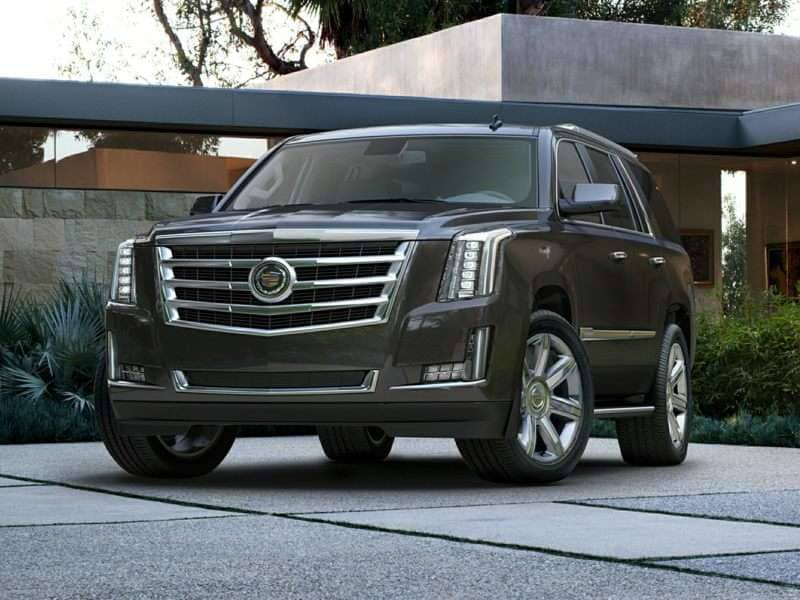
Photo by Cadillac
2017 Toyota 4Runner
Perhaps not quite as big as some of the large suvs with the best crash ratings, the 2017 Toyota 4Runner still puts up competitive crash-test results. More specifically, the midsize 4Runner has a 4 Star Overall Safety Score from NHTSA, and that’s based on a 4 Star result for frontal crash protection, 5 Stars for side-crash protection, and a 3 Star rating for rollover roof strength. Moreover, those grades are identical in both rear- and four-wheel-drive 4Runner trims, while a rearview camera is standard. Customers also should know that, despite its nimbler dimensions, the 4Runner is plenty robust. In fact, it showcases a standard 270-horsepower V6, a 5,000-lb. towing maximum, and a dedicated off-road model.
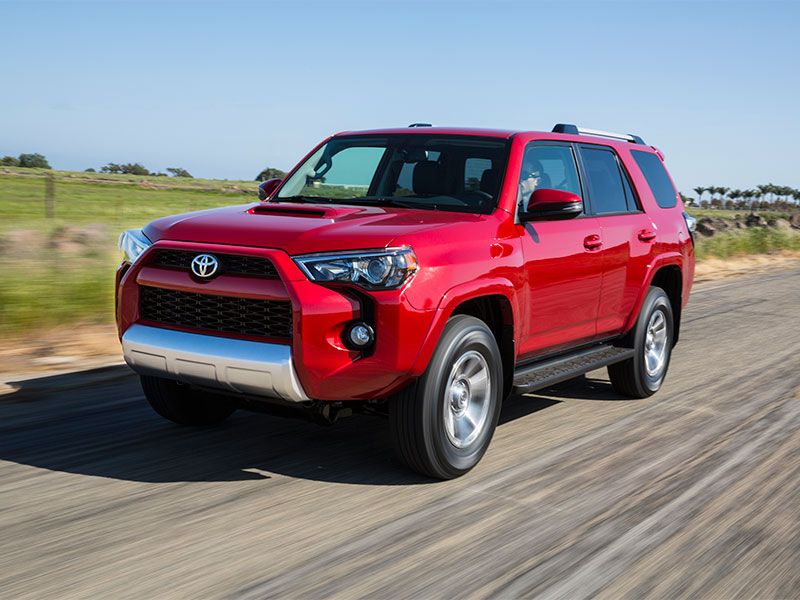
Photo by Toyota
2017 Toyota Sequoia
At this stage, shopping for the large suvs with the best crash test ratings can get a little tricky. That’s because vehicles like the 2017 Toyota Sequoia either haven’t been fully tested by NHTSA or are completely unrated. The Sequoia, for one, does log a 4 Star score in the government’s test for rollover roof strength, and remember, no other body-on-frame SUV does better. Additionally, the Sequoia has a standard rearview camera for driver-assistance purposes. Toyota’s full-size SUV also furnishes a significant boost in cargo space and pulling power over the 4Runner: The Sequoia has a storage capacity of 120.1 cubic feet with all rear seats folded, and owners can tow up to 7,400 lbs. with a standard V8.

Photo by Toyota
2017 Nissan Armada
The 2017 Nissan Armada is an example of a sport-utility that hasn’t been tested by NHTSA, but it’s likely to be on your shopping list if you’re focused on safety. In that situation, you can still gain some confidence from the Armada’s array of available driver-assistance measures—many of which are missing from the large suvs with the best crash test ratings. These are features like adaptive cruise control, a blind-spot monitor, lane-departure warning, lane-keeping assistance, forward and reverse automatic braking, a 360-degree around-view monitor, and Nissan’s Predictive Forward Collision Warning. An evolution of the typical system, this technology can detect and monitor not just vehicles immediately in front of the Armada, but also the vehicles ahead of those, too.
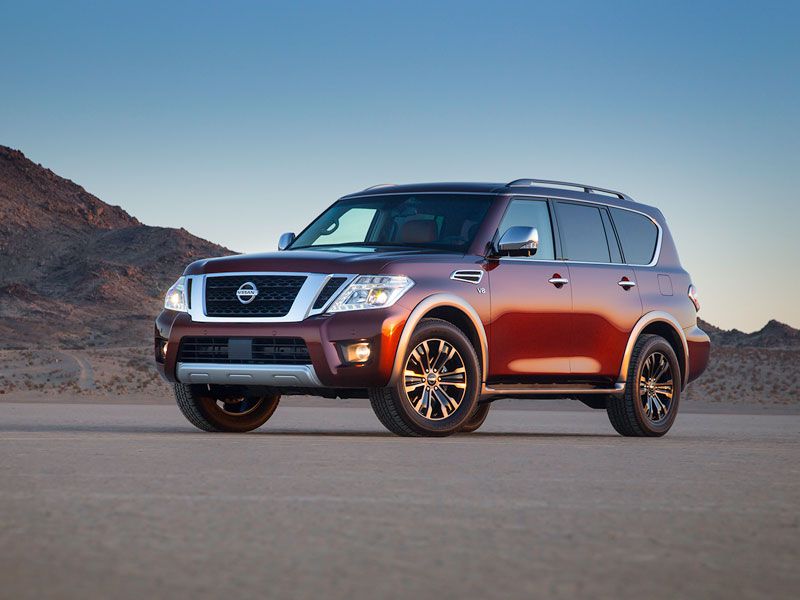
Photo by Nissan
2017 Infiniti QX80
Nor has the 2017 Infiniti QX80 been submitted for NHTSA testing. That said, when you compare it the large suvs with the best crash test ratings, the QX80 does have some benefits of its own. For instance, as the luxurious corporate cousin to Nissan Armada, the QX80 can be ordered with all of the same high-tech safety innovations, from Predictive Forward Collision Warning to forward and rear automatic braking. On its part, the QX80 also offers ultra-supple semi-aniline leather seating, climate controlled front seats, real-wood cabin trim, and a steering wheel that’s wrapped in leather and accented by its own real wood trim. The QX80 has its own burly V8, too, for the ability to tow up to 8,500 lbs.
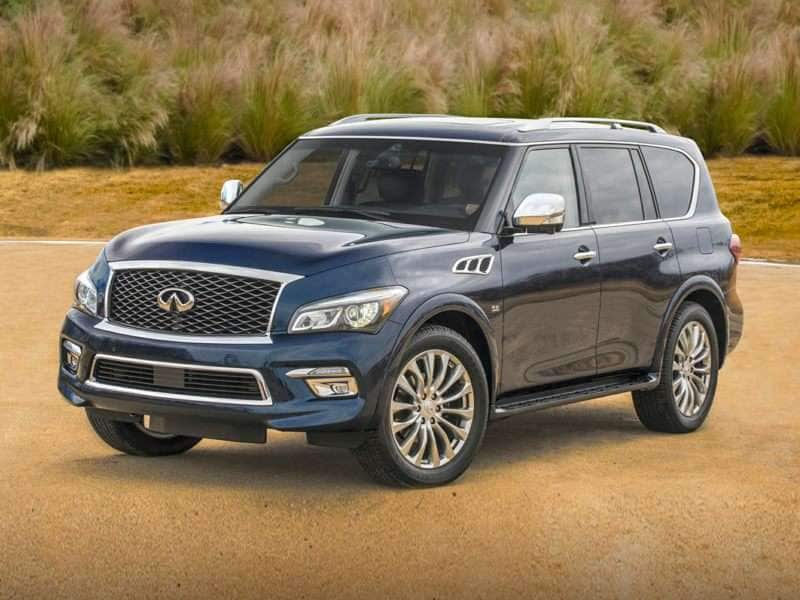
Photo by Infiniti
2017 Lexus LX
Another name missing from the list of large suvs with the best crash test ratings is Lexus. Following the lead of Infiniti and the rest of the premium brands, Lexus hasn’t submitted its body-on-frame sport-utilities for NHTSA testing. What it has done, though, is provide a wide selection of the latest safety technologies for its 2017 Lexus LX full-size flagship sport-utility vehicle. Bundled in the standard Lexus Safety System+, features on hand in this package include a pre-collision system with pedestrian detection and automatic braking, a lane-departure alert system, adaptive cruise control, and automatic high beams. Not part of that setup, but standard anyway, are a surround-view camera, blind-spot monitor, and rear cross-traffic alert.
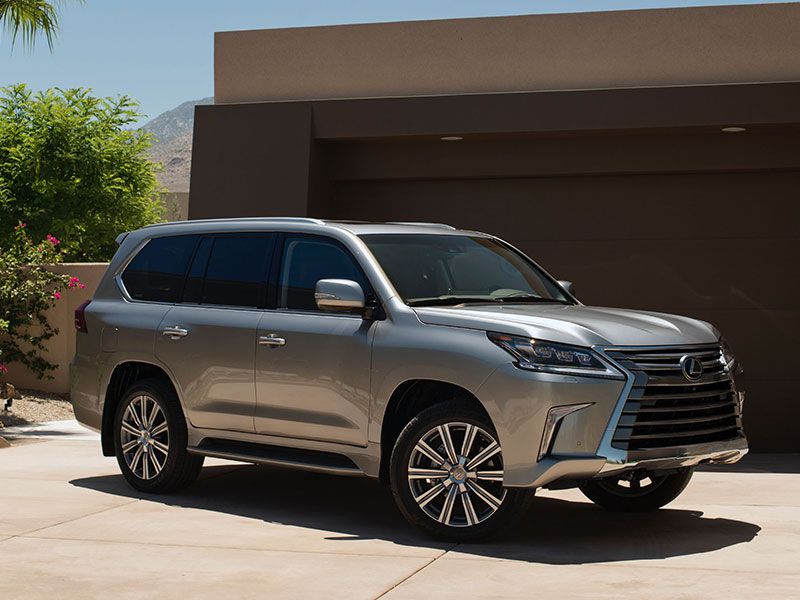
Photo by Lexus